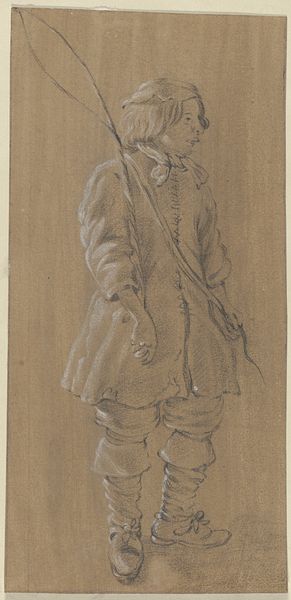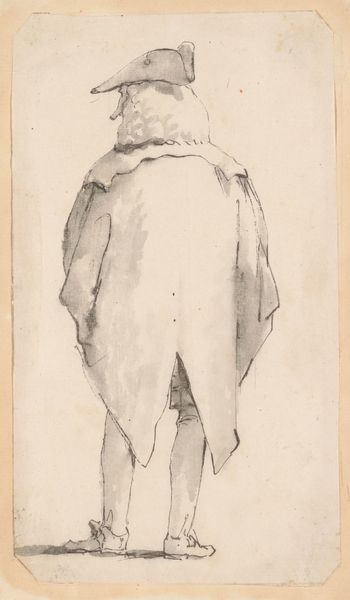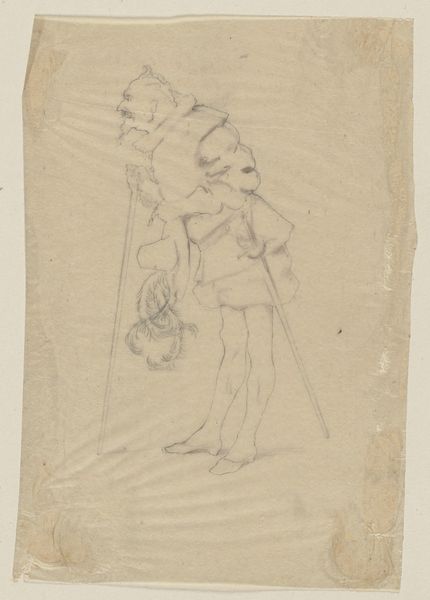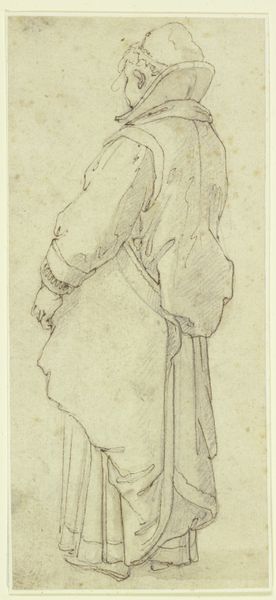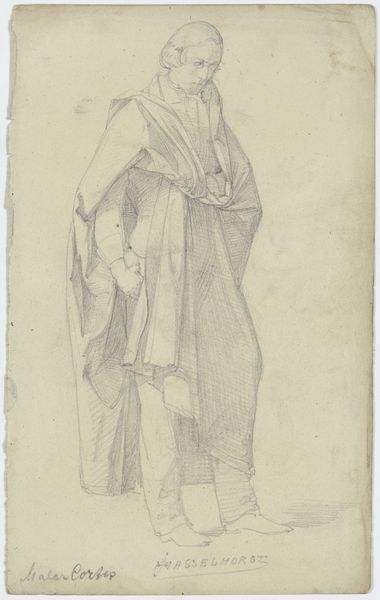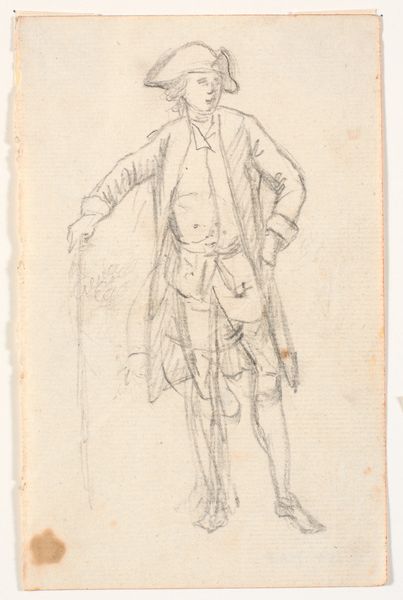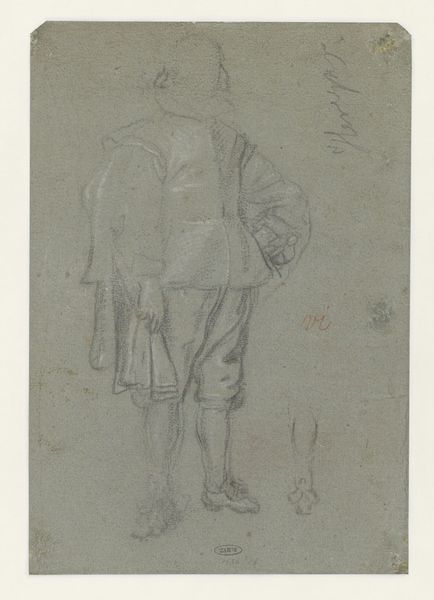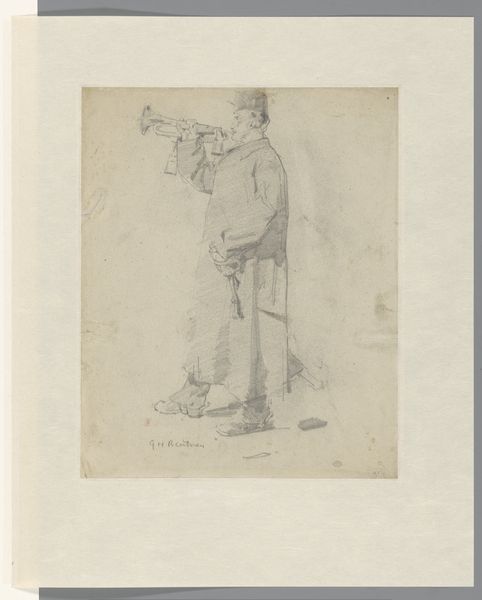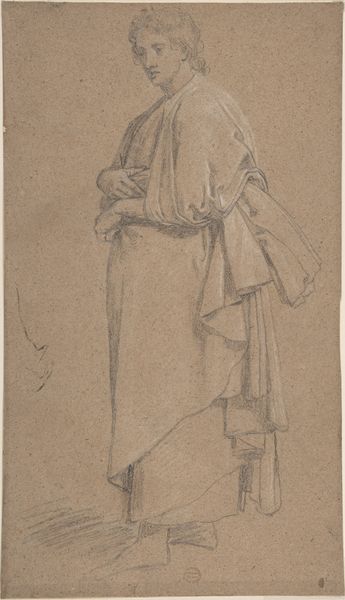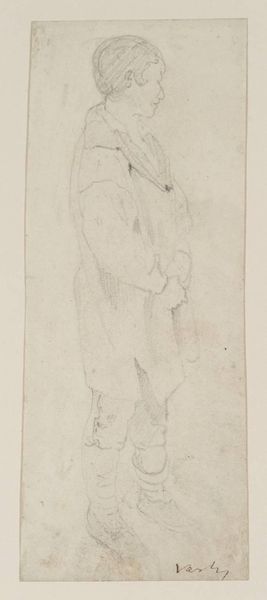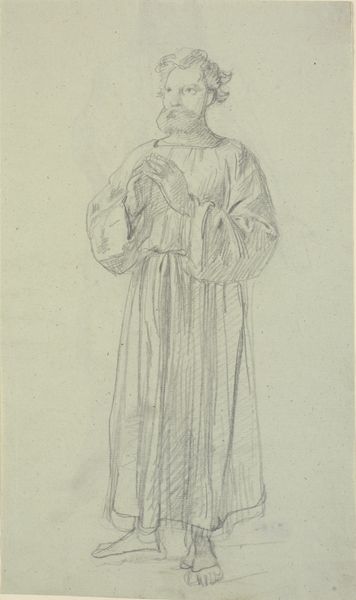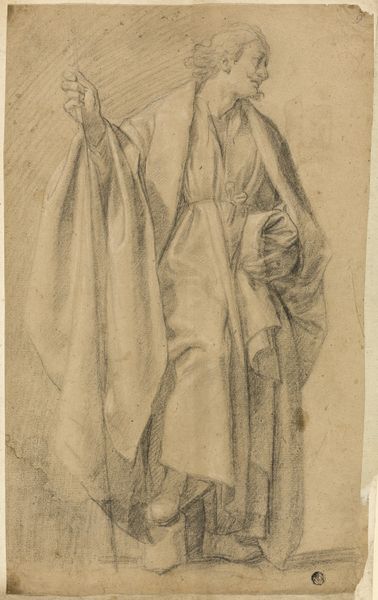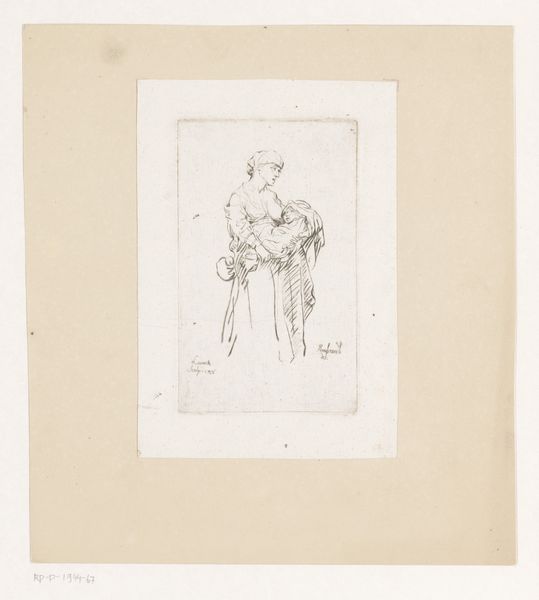
drawing, paper, chalk, graphite
#
portrait
#
drawing
#
figuration
#
paper
#
11_renaissance
#
chalk
#
line
#
graphite
#
italian-renaissance
Dimensions: sheet: 13 3/4 x 6 7/8 in. (35 x 17.5 cm)
Copyright: Public Domain
Girolamo Siciolante da Sermoneta made this drawing of Saint Francis in 16th century Italy, using black and white chalk on blue paper. The image resonates with the religious reform movements of the time. The figure of Saint Francis embodies ideals of poverty, humility, and direct connection to the divine. During the Reformation, figures like Francis were held up as examples against the perceived corruption of the Catholic Church. By depicting Francis in a simple, unadorned style, Siciolante may be subtly commenting on contemporary religious debates. Note how the use of chalk on colored paper gives the drawing a humble, almost austere quality, fitting for its subject. As historians, we can delve deeper into the context by studying religious treatises, letters, and other documents from the period. This helps us understand how artists like Siciolante engaged with the social and institutional forces of their time. The meaning of this drawing, like any artwork, is not fixed, but shifts with its historical setting.
Comments
No comments
Be the first to comment and join the conversation on the ultimate creative platform.
